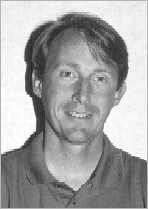 Assessment in mathematics courses has been occupying many faculty
minds of late. Administrators of public institutions are under
pressure from taxpayers and politicians to be “more
accountable” and from accrediting institutions to demonstrate
some form of quality control. Formally speaking, assessment is a
process by which an educator obtains information about student
learning outcomes and then uses this information to improve efforts.
Mathematically speaking, we would like to create a feedback loop so we
can make sure that our students are learning what we hope they are
learning and that they are learning as much as possible. Assessment
is indeed a valid concern at two-year schools. Student demographics
change with the economy and the times. Technology is advancing and
changing the way we deliver course material. A gauge to tell
mathematics instructors what is working with the current group of
students would be very nice.
Assessment in mathematics courses has been occupying many faculty
minds of late. Administrators of public institutions are under
pressure from taxpayers and politicians to be “more
accountable” and from accrediting institutions to demonstrate
some form of quality control. Formally speaking, assessment is a
process by which an educator obtains information about student
learning outcomes and then uses this information to improve efforts.
Mathematically speaking, we would like to create a feedback loop so we
can make sure that our students are learning what we hope they are
learning and that they are learning as much as possible. Assessment
is indeed a valid concern at two-year schools. Student demographics
change with the economy and the times. Technology is advancing and
changing the way we deliver course material. A gauge to tell
mathematics instructors what is working with the current group of
students would be very nice.
Having been in many faculty meetings where this is discussed, I know that assessment is usually met with groans of annoyance. This reaction is not because the information is not valued; it is because it is so hard to collect and quantify, especially if it must be quantified in the form of a report given to an administrator who may or may not have a mathematics background. Additionally, many mathematics instructors are apprehensive about giving up course time for assessment. After all, mathematics is fun—why would you want to give up fun time for assessment time? Another impediment to assessment is the time that it takes up outside of the classroom. Most instructors at two-year schools have significant teaching loads as well as committee responsibilities. Time spent on assessment cuts into course preparation time and research time. In the end, this can cause the level of creativity for course preparation to fall.
Many mathematics instructors claim to have a “gut feeling” about the level of learning success in a particular class. I used to be one of those instructors. Yes, I can tell when a class understands a particular topic and when they do well on a test; however, I have noticed something over the years that I have been teaching. Something happens during the Christmas and summer breaks; students seem to forget much of what I thought they had learned. So, not only is a gut feeling hard to quantify; it may be wrong. This phenomena begs another question about assessment: should we assess while students are in the course or some time after they have left the course?
Some institutions are allowing individual instructors to make their own assessment devices, while other schools attempt to assess at the department level. Both methods can be fraught with difficulties. If each instructor uses his or her own device it is hard to know whether everyone is measuring something useful. If it is done at the department level we run the risk of instructors teaching to the assessment device (this can be especially true if there are significant numbers of part-time instructors). This can stifle course creativity and create unneeded tensions within a department.
In closing, I would like to solicit your ideas. What seems to work for you? In your experience, what does not work and why? What are you trying to measure when you assess? Over the course of the next year, please send me your ideas and experiences and I will report the results in the spring 2006 Newsletter. Responses will be kept anonymous.
Mark Naber, Two-Year College Vice Chair